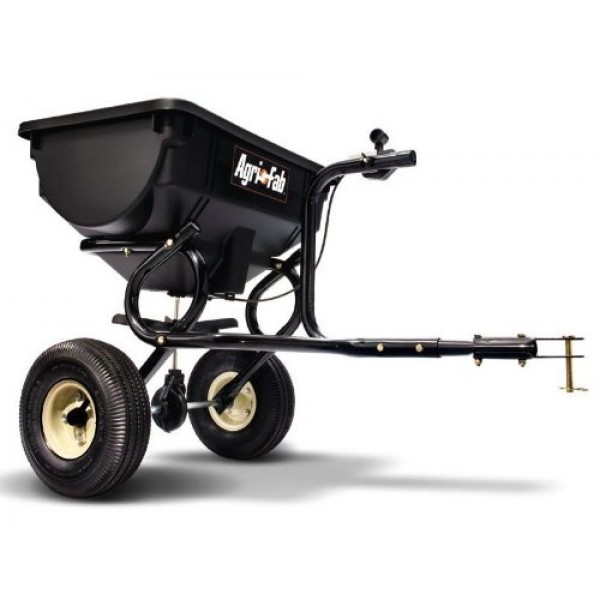

Virginia Tech recommends removing a square foot section of lawn and checking the roots if you’re in doubt. So how do you know when your lawn is compacted and in need of aeration?

#LAWN AERATOR TOW BEHIND BOOKU AURORA IL HOW TO#
How to Tell When Your Lawn Needs Aeration Otherwise, every two to four years should be sufficient.ĭaly says that the average homeowner’s lawn needs to be aerated every three to four years, but aerating every year doesn’t hurt anything.Īt the other extreme, heavy usage areas including as ball fields or grassy areas where vehicles drive or park need it two or three times a year, he says. If your lawn receives heavy foot traffic, aerate every one to two years. Time of year isn’t the only timing consideration you need to take into account either. Augustine and Centipede grass should be aerated during their active growing season of May to September, Daly says.Ĭool-season varieties of grass such as tall fescue, he says, should be aerated between September and November or March and April. Warm-season turfgrass species such as Bermuda, Zoysiagrass, St. That mostly means early spring and fall for cool-season grasses and late spring or summer for warm-season grasses.

Only aerate when the lawn is growing vigorously, says the Maryland Extension. The best time to aerate depends on your grass type and when it’s growing its strongest. Your lawn will need time to recover, and that means time to grow. That means the spikes actually compact the soil further around the holes.ĭon’t just run out to the rental store and fire up the aerator. The spikes create holes for water and nutrients, but do so by pushing aside soil. Spike aeration - simply using spikes to poke holes in the lawn - is an option but it’s usually not recommended. Because soil compaction occurs primarily in a thin surface layer, penetrating 2-4 inches easily penetrates the compacted top layer. Plugs should be ½ to ¾ inches in diameter, 2-6 inches apart and 2-4 inches deep, according to the University of Maryland Extension Service. Actually removing soil and distributing that over the surface goes a long way in loosening up compacted soil, while the cores break down and provide nutrientsĬore aeration also creates a system of large pores for moisture and plant nutrients to be taken into the soil. Hollow-tine core aeration is the preferred method, Daly says. That frees up space and gives the soil room to decompress. The consensus among experts is that coring is best. Lawn aeration comes in two basic flavors: coring and spiking. Sodded lawns should be aerated annually for the first six to eight years, according to NDSU. It’s especially important if you’re trying to establish a new lawn. It helps with weed control, as a healthier lawn will crowd out weeds. It enhances water and nutrient movement through your soil and even smooths out bumpy lawns. That means water and nutrients can permeate your root zone and keep your lawn healthy and happy.īenefits of aeration go beyond opening up access your soil.Īeration invigorates roots and stimulates growth. Aerating your lawn encourages root growth, relieving that pressure and lessening soil compaction.

Clay soils are especially susceptible to compaction, he said. In compacted soil, water, nutrients and air have a tougher time making it through to your grass roots. Time and trampling reduce pore space between soil particles, says Timothy Daly with the University of Georgia Extension in Gwinnett County. Over the years, especially for a well-trod-upon lawn, the soil underneath the grass will compact. So here’s what you need to know about aeration, how to know if you need to aerate, when and how to do it, and whether you may be better off calling in the pros. If you haven’t done it before, poking a bunch of holes in that lovely grass cover can be a scary prospect. Any lawn seeing high traffic, excessive thatch or heavy soils will benefit most from a good round of aeration. It’s a healthy lawn, but you’re still struggling to take your lawn to that next level of perfection.Īlmost all lawns will benefit from aeration, but a great lawn demands it. You’ve mowed and watered correctly and taken care of those grubs and ants. How to tell when your lawn needs aeration.


 0 kommentar(er)
0 kommentar(er)
